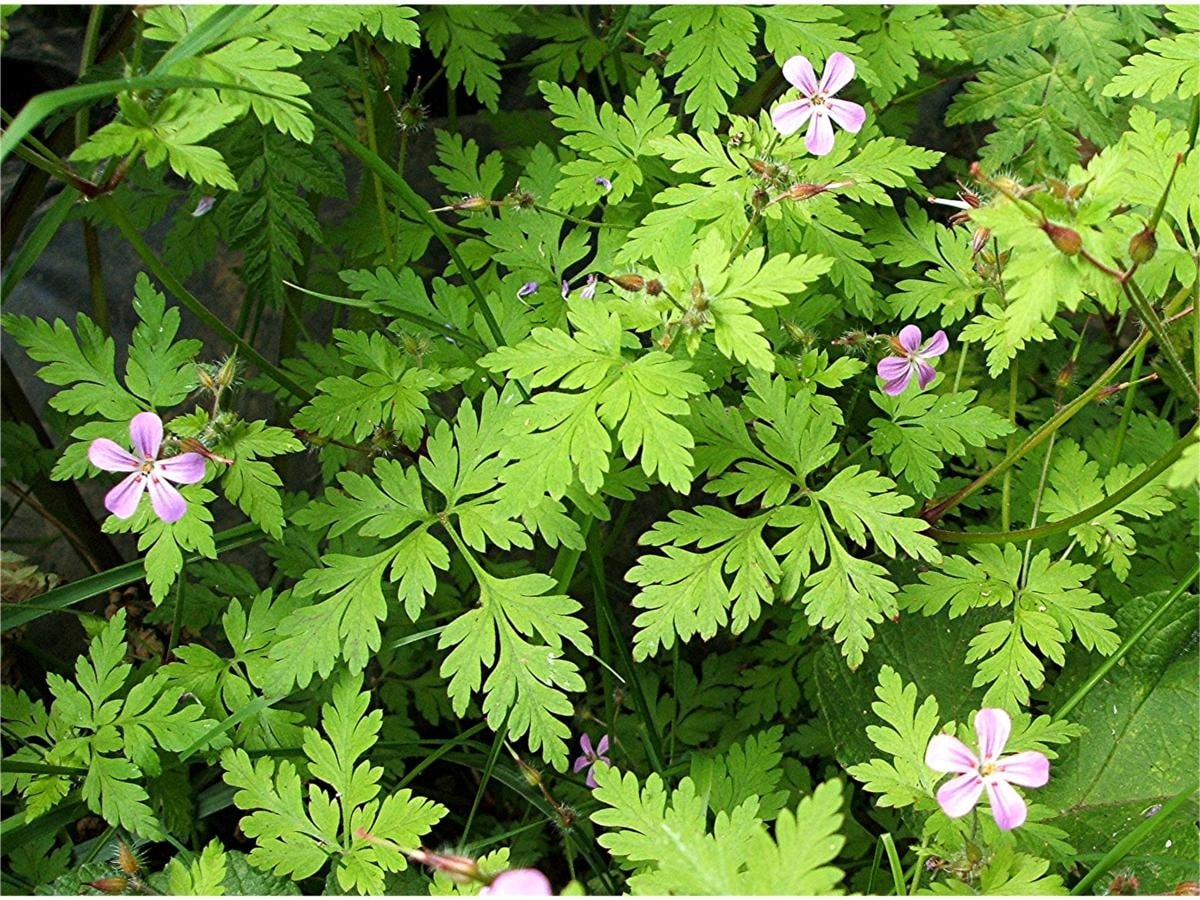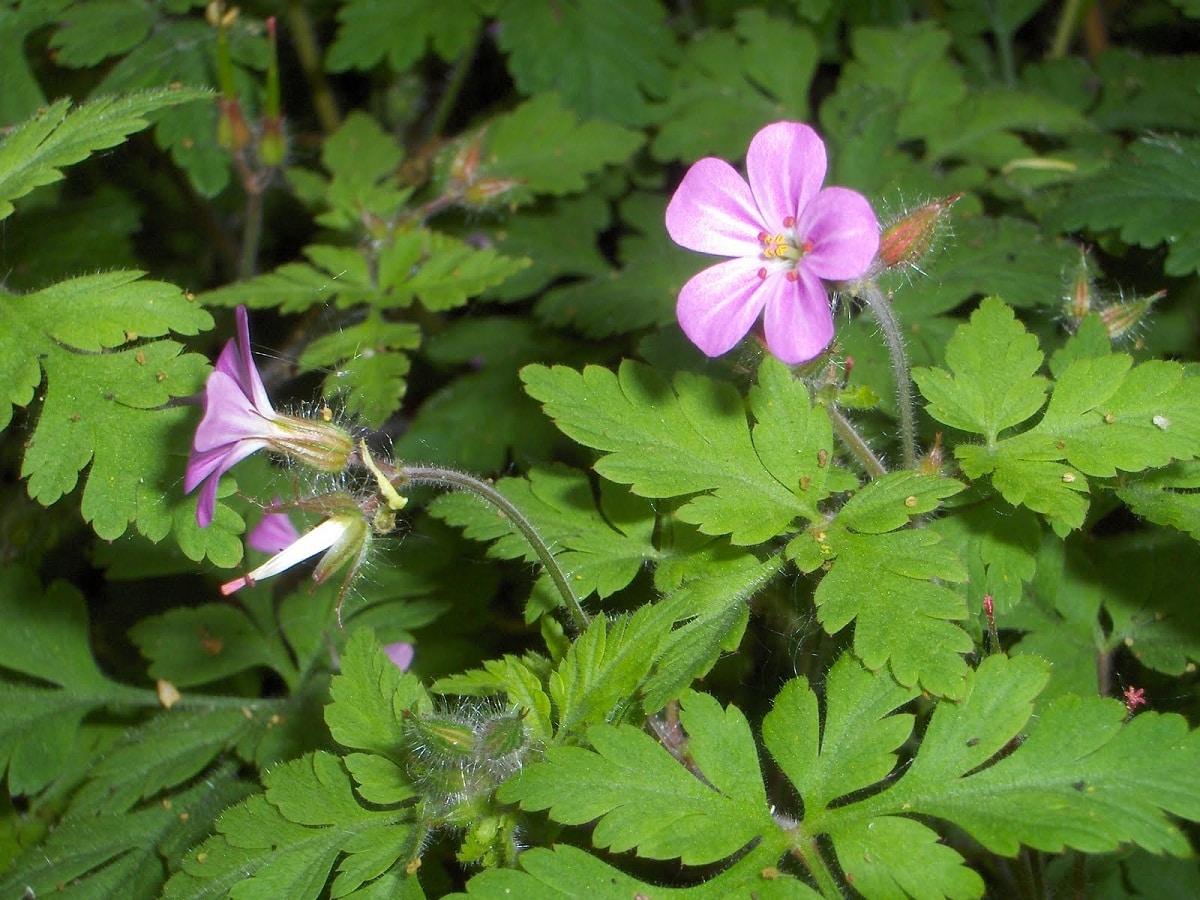
Do you want to know a plant that, in addition to having an important ornamental beauty, is also widely used in the world of medicine for its properties? These characteristics are gathered by the Geranium Robertianum, which is also called St. Robert's Herb and is found in greater quantities in Europe, Africa and Asia.
El Geranium Robertianum which means great contributions to science, but also you can grow it to give a particular color to your gardens. In this article we will tell you why medicine has adopted St. Robert's Wort and what its general characteristics are, as well as the best conditions for its cultivation and development.
Features Geranium Robertianum

When we speak of the Herb of St. Robert we refer to a plant that can be both annual and biennial and it is within the family of geraniaceae, in which it is one of the 700 species of herbs or shrubs that develop in temperate, warm and subtropical environments.
This usually also receives other names according to the area in which it is located, being able to hear that it is named as Geranio de San Roberto, Pico de Cigüeña, Hierba de la Equinancia and Yerba de San Rupert among others.
All these denominations have to do with the fact that in many different places where they are developed, it is used for its medicinal properties. Our ancestors did it as much as today, where its extract is usually used for different medications.
Although it can be thought that the term comes from San Roberto, as it is usually named, this plant receives that name due to a deformation of Latin blush, which speaks directly of the red color it shows. It is common in tropical areas and is not usually a very tall plant, although it can develop well even up to 2000 meters above sea level.
El Geranium Robertianum it is a plant that is usually partially fleshy and it has a stem that defines its total height, which can be between 10 and 55 centimeters approximately.
These stems usually show a particularity, which is their color that ranges from purple to reddish, with procumbent to ascending characteristics. Branching usually starts from the base of the roots, in addition to showing long internodes and swollen knots and a prominent length hairs, which are sparsely arranged.
Regarding its leaves, shows a long petiole, which has both glandular and other eglandular hairs and deflexes. These usually have a measurement that does not exceed 8 centimeters wide and show marked divisions, being able to appear in some cases three and in others up to five lobes.
These appear alternately, but in the basal part these leaves are opposite. In the case of your flowers, these will be found housed in the inflorescence, in pairs on their last peduncles.
Regarding their shape, these show actinomorphic characteristics and show 5 sepals from between 6 and 9 millimeters lanceolate, erect and hirsute, showing 3 well pronounced nerves and a filament that does not exceed 2 millimeters.

These flowers show 5 petals that usually have a measurement of between 5 and 12 millimeters approximately, containing a white nail and a rounded blade and the apex is created in a pink color that gives it an important color contrast.
It shows 10 fertile stamens, its pollen shows a particular orange color and its antennae too they are usually seen between an orange and a reddish color. Some carpels, from which a stigma emerges that in its division forms 5 other filiforms, are part of its ovary.
Its fruits sometimes have one and two other transverse ribs in their upper part, that is, at the apex, while the lower part has them less pronounced. These are mericarps that, although they look independent, are linked with delicate fibers.
Habitat and distribution
Among the places where this plant has a greater presence are all those where climates are warm and subtropical, being very common in the areas that meet these characteristics of Europe, Asia and Africa.
Although this is also used as a culture, it is very common to see it grow wild and spontaneously in different places that show a very humid and shady characteristic, such as roadsides, uncultivated terrain and forests.
It can also make its way into old clay walls, or between the gaps between the stones, something that makes it very similar to other herbs, such as Umbilicus, among others.
We can see specimens of St. Robert's wort grow at any height, as long as it does not exceed 2000 meters above sea level and although it is a plant that is in bloom for much of the year, it is during the summer time that it is collected for medicinal use. .
Care
As we have already mentioned, their valuable contributions make these specimens a medicinal plant And that is why you will not only be able to find it as a wild plant that makes its way, but you will also be able to find places where it is cultivated, to carry out the collection during the summer that gives it its properties.
Although this can be developed in shady places, this has to do with the fact that it usually has some hint of natural lighting. This means that it is a plant that must have some exposure to the sun, or in any case in the half shade that forms in those environments in which it grows naturally.
Regarding the floors, constant humidity is one of the most important factors, although these usually even develop in semi-dry terrain. The substrate must be very light and drain perfectly, as do all types of sandy soils or clay soils that drain well.
Medicinal properties

To understand what makes this a plant with many medicinal uses, we must say that what is used as active parts of it are a substance called gerania, its essential oils and tannins, very important for different aspects.
The branch of medicine that usually uses preparations that contain extracts of this plant is herbalism, although it is also often used as a hemostatic, being able with this to stop all types of hemorrhages, among which are the nasal and pulmonary.
It is usually incorporated in different ways, but it is also widely used topically, for dermitis and ulcers, as well as other skin diseases.